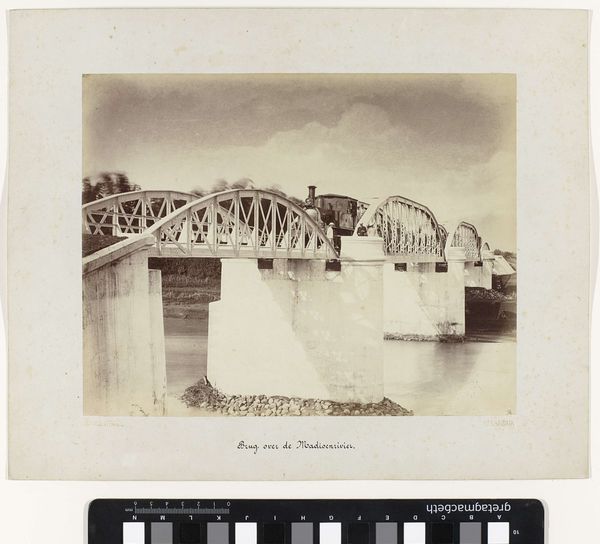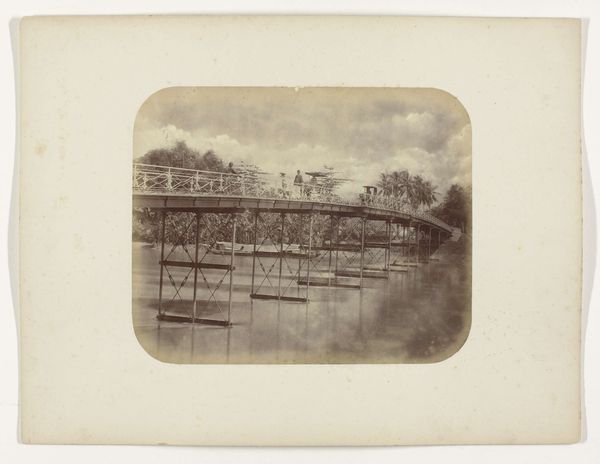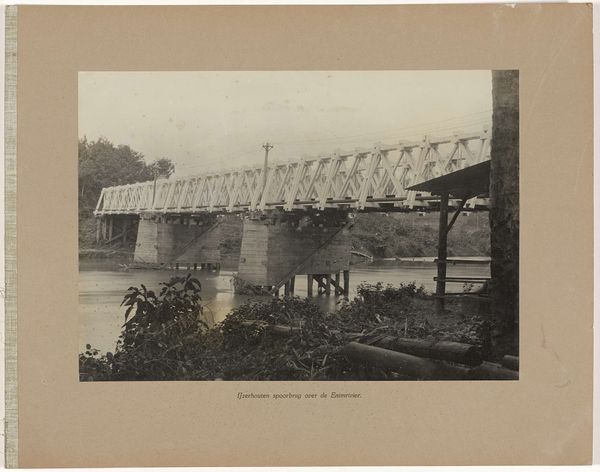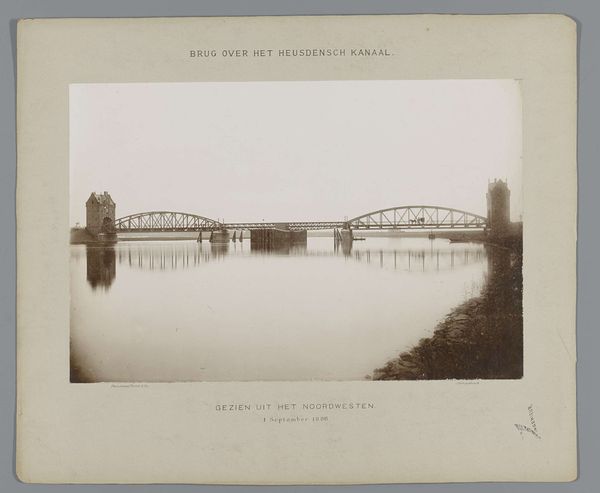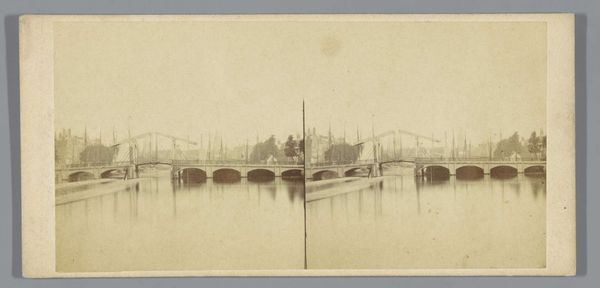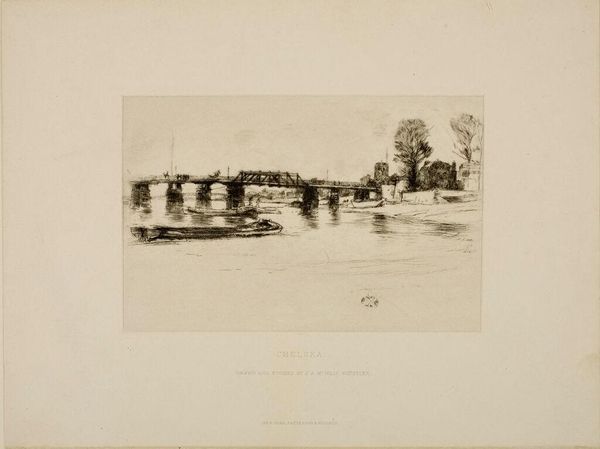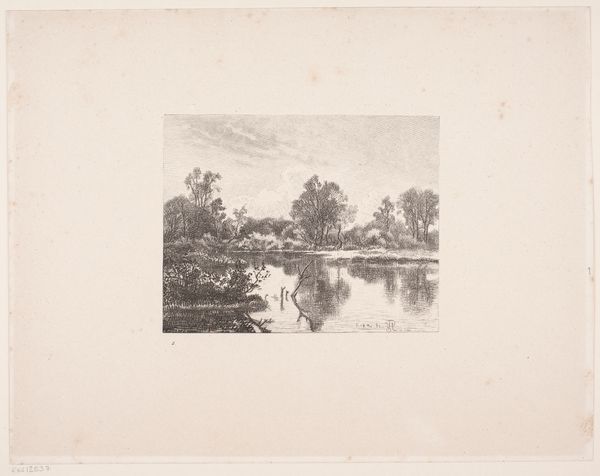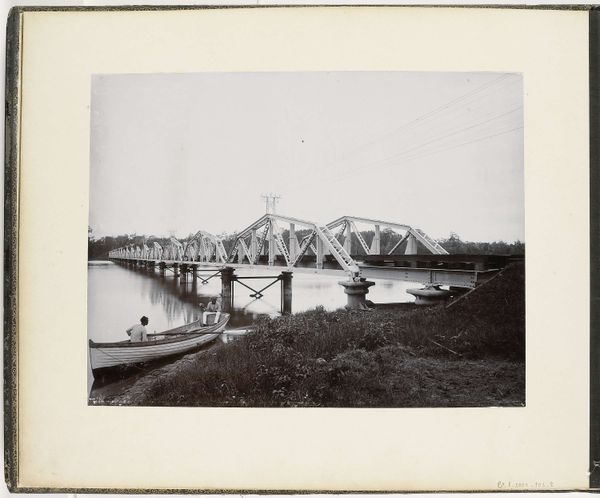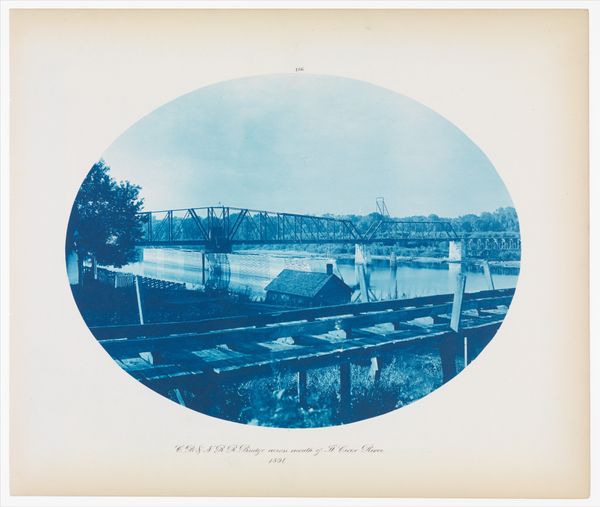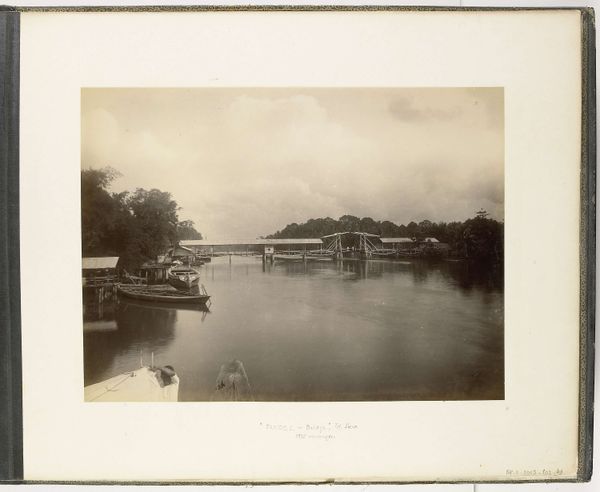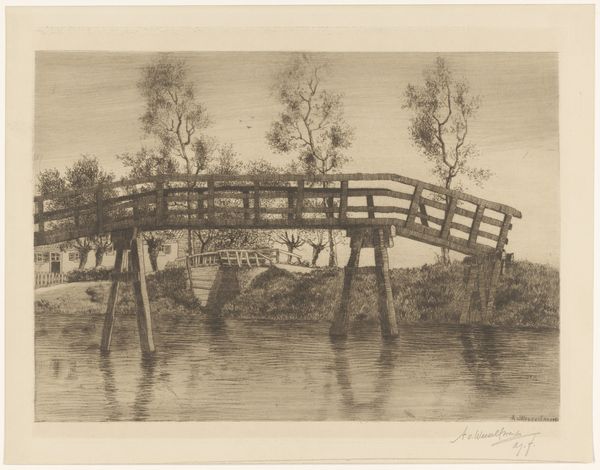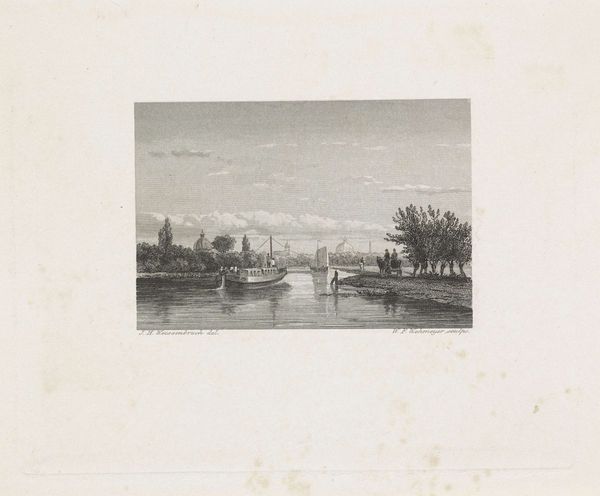
print, photography
# print
#
landscape
#
photography
#
realism
Dimensions: height 215 mm, width 275 mm, height 300 mm, width 370 mm
Copyright: Rijks Museum: Open Domain
Editor: Here we have "Brug over Pegirianrivier," a photograph dating from the 1880s by Herman Salzwedel. The first thing that strikes me is the bridge’s steel construction contrasting with the otherwise soft, almost dreamy quality of the scene. What do you see in this piece? Curator: It's precisely that tension between the industrial and the idyllic that grabs me. Look at the historical context. This image emerges from a period of intense colonial activity in places like Indonesia. Salzwedel, through his lens, is framing a landscape irrevocably altered by Western engineering. It is both documenting the transformation of the landscape and, potentially, subtly legitimizing it through aestheticization. Does the tranquility deceive us about this political subtext? Editor: I hadn't considered that. It felt very straightforward, like a simple record. So the act of framing it as a ‘picturesque’ scene serves a purpose? Curator: Absolutely. Who is the intended audience, and what narrative does this image reinforce? Think about it: sending images of modernization back home solidifies the idea of progress and control. The bridge isn't just a bridge; it's a symbol of colonial power imposed on the Indonesian landscape. And also notice, photography, as a medium, was tied directly to the colonial project. It became a powerful tool for cataloging, classifying, and controlling populations and spaces. What do you make of its function now being in a museum? Editor: It's a stark contrast, holding this photograph in a collection like the Rijksmuseum. It demands we grapple with this history more directly, it seems. I hadn't fully grasped all the subtle messages layered beneath its apparent simplicity. Curator: Indeed. Examining art in terms of its role within social, political, and institutional narratives uncovers layers that go beyond pure aesthetics, it challenges us to confront the complicated legacies of the past, particularly those tied to colonialism.
Comments
No comments
Be the first to comment and join the conversation on the ultimate creative platform.
